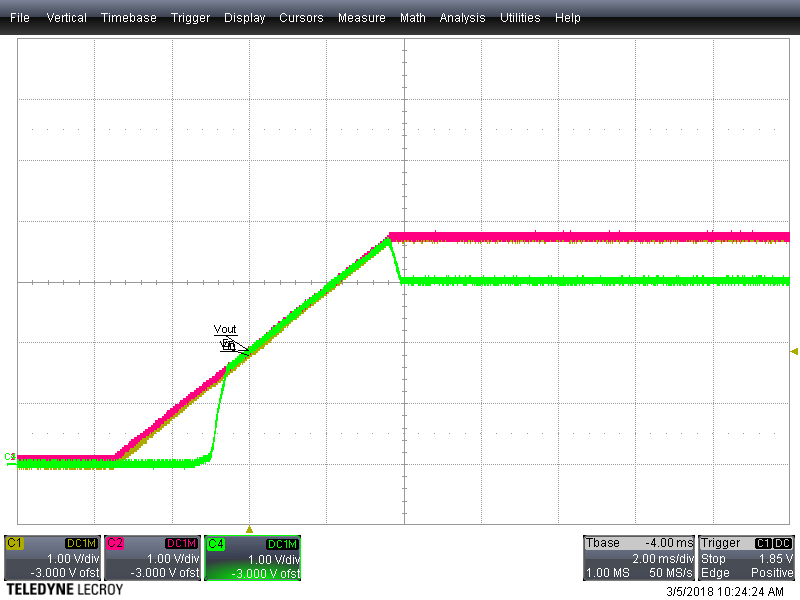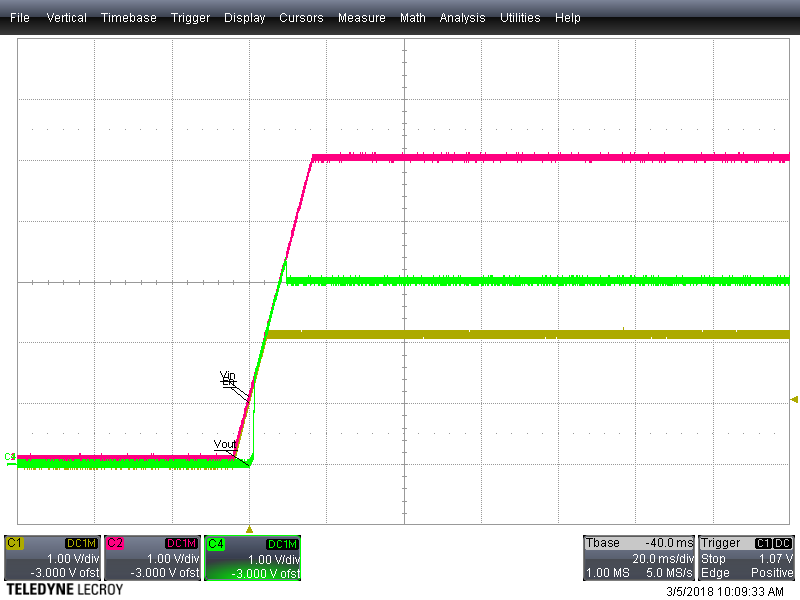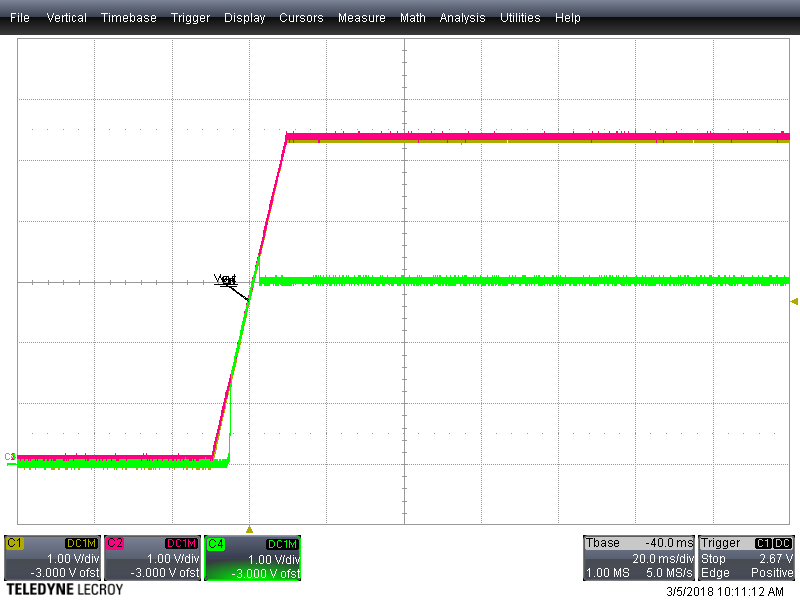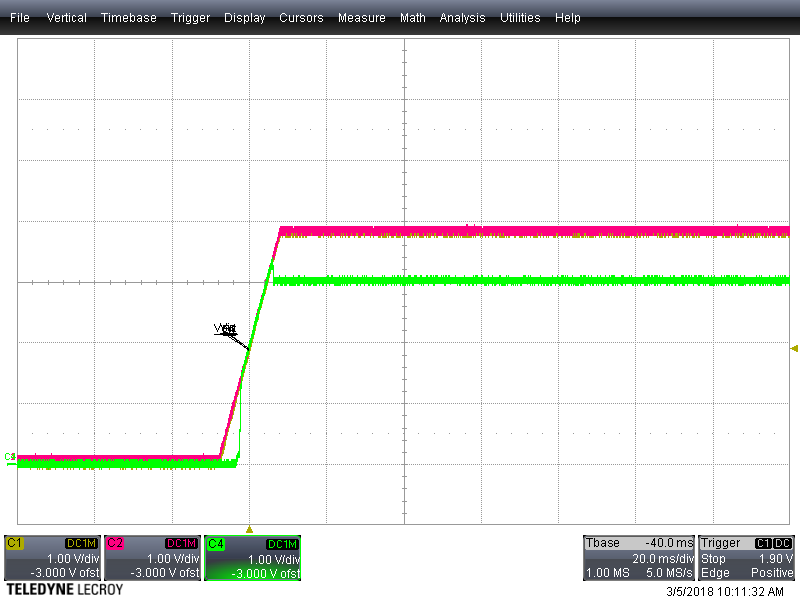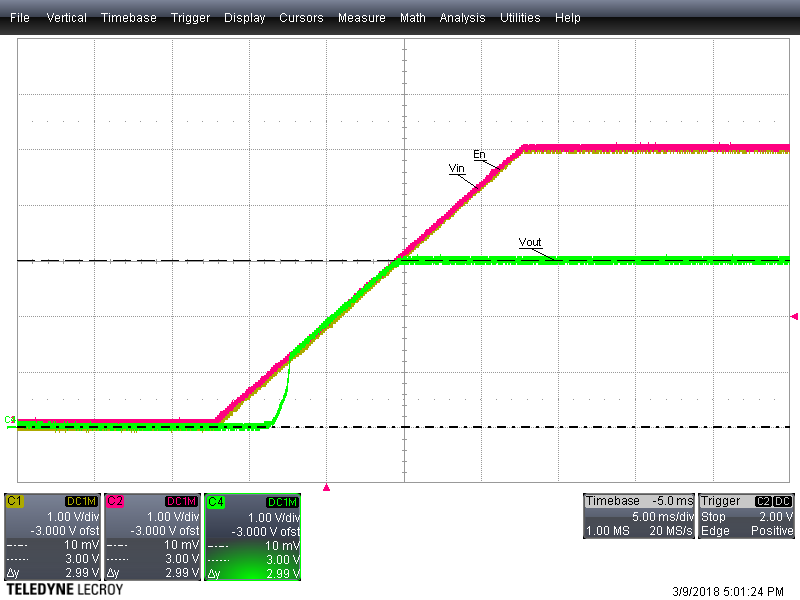Other Parts Discussed in Thread: TPS73801, TPS74401, REG104, LM4132
I'm sorry, I have posted below.
Can you tell me about the last post?
<Last post>
Next, on the point that I asked 「Is not it a mistake of" very fast "?」, The waveform in Figure 23 of the data sheet is 2 msec / div for 50 msec / div.
Comparing the behaviors at startup, I think that the customer's waveform and the red frame below are the same,
so when comparing the time axis of this point, I felt that the customer waveform started " very fast ".
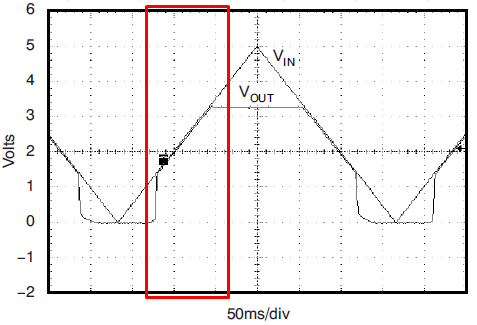
Is my opinion wrong?


